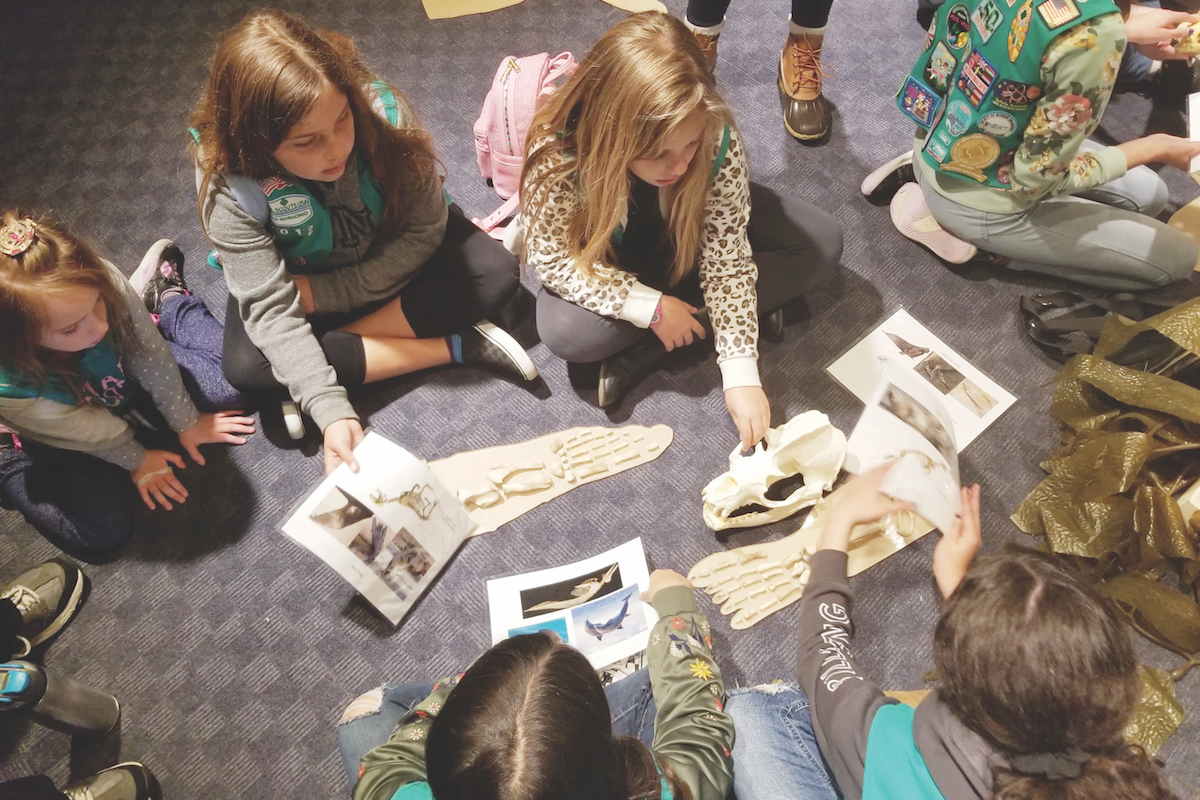
Local organizations offer STEM programming that opens doors for youths in Laguna Beach and beyond.
By Ashley Ryan
STEM—the study of science, technology, engineering and mathematics—plays a role in nearly everything we do. From flicking on a light switch or creating a financial budget to using smartphone GPS to navigate to a new destination, the impact of these types of careers is exponential.
According to “STEM and the American Workforce,” a collaborative study by several science-based organizations, these industries play a role in 67% of jobs in the United States. Yet, for some reason, these types of careers are often thought of as difficult or hard to break into.
One way to ensure that local youths are prepared to take on challenging roles is to start them in STEM programming early on. “STEM education provides an opportunity for young students to step into the role of a scientist and really see themselves as someone who can do science,” says Kaitlin Magliano, former education manager for Crystal Cove Conservancy, who recently left the position to move abroad. “So many students have an innate curiosity about how the world works, and I think it’s so important to cultivate that early on and create the next generation of scientists and stewards of the environment.”
A number of special workshops and camps in the Laguna area allow children to delve into everything from climate change, marine science and genetics to coding, forensics, robotics and more with hopes that they will find their passion and, ultimately, leave a lasting impact on the world.
Girl Power
Since recently celebrating a decade of service, Laguna Beach-based education nonprofit Project Scientist has experienced endless growth, having now served more than 20,000 girls.
“While I was running The NASCAR Foundation, I was really digging into STEM,” says Project Scientist founder and former CEO Sandy Marshall. “… As I researched, I learned that, at different ages, girls and women drop out of STEM subjects, majors or careers due to loss of confidence and role models. At the time, I had a 4-year-old daughter and I wanted her to be competent in STEM and to believe that she could be in any sort of career she wanted to. So I started Project Scientist to really serve her [and girls like her].”
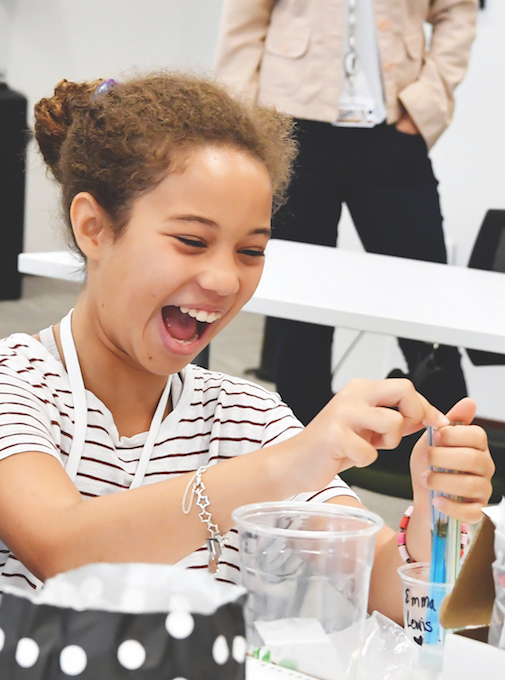
Project Scientist used to host programming on college campuses—locally, at Concordia University Irvine and the University of California, Irvine—but went entirely virtual when the COVID-19 pandemic hit. Though the organization is back to focusing on in-person workshops, the business model has pivoted to focus on low-income students, with programming held at local schools, Boys & Girls Clubs, libraries and STEM-related companies.
During the summertime, the immersive Summer STEAM Lab—adding arts to STEM—gives 4- to 12-year-old girls the chance to do a deep dive within businesses like Google Fiber, CoreLogic, Blizzard Entertainment and Capital Group, learning relevant skills while completing hands-on tasks. “Girls need to see women thriving in that space,” Marshall adds. “They need that relevance of local careers to keep them excited and encouraged to continue down that path.”
An after-school STEAM Club, also designed for girls from 4 to 12 years old, is offered during the academic year, on-site in Southern California, Minnesota, North Carolina and Mexico as well as online for those in other markets. A new theme is presented each month, with special kits sent out with specialized content and activities. Additionally, a virtual scholars program gives 13- to 18-year-olds a chance to connect with likeminded girls over STEM activities on Sunday evenings, ensuring that youths can participate in Project Scientist from the time they’re 4 until they become adults.
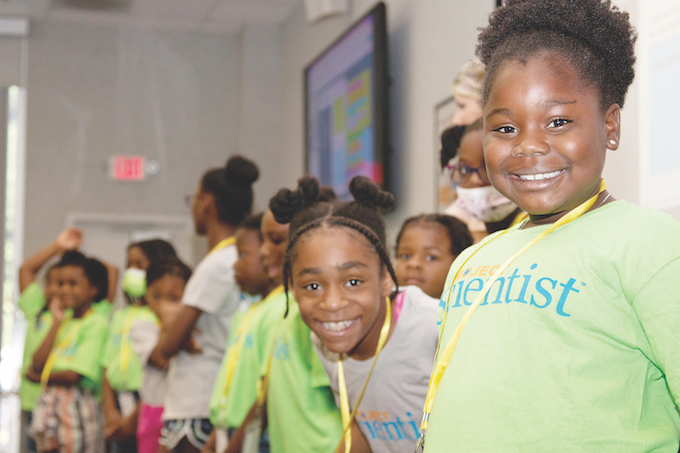
“When you’re in a STEM program, you’re learning critical thinking skills, problem solving [and] creativity,” Marshall says. “We are always stressing to have girls become comfortable with failing and making mistakes because, in science, that drives innovation. You’re never going to solve these critical issues we have if you’re not taking risks.”
Marshall recently passed the reins to a new CEO, Patrice Johnson, to lead the organization through its next chapter. And Project Scientist is just getting started, with a goal of providing 1 million STEM experiences by 2040.
Marine Magic
Educational programs at Pacific Marine Mammal Center—a nonprofit located in Laguna Canyon that facilitates the rescue and rehabilitation of seals, sea lions and other pinnipeds—are unlike any others in the region.
“There is nowhere else in Orange County that kids can see a marine hospital in action or see seals and sea lions as close as they do at PMMC,” says Kirsten Donald, a marine mammal biologist and vice president of education and ocean advocacy at the center. “Our experiential style of learning—which incorporates past and present patient stories—generates a strong understanding of ocean concepts [as well as] the importance of ocean ecosystems and their conservation.”

Presented in a unique space with a focus on marine life, environmental science and ocean stewardship, STEM-related sessions help local youths understand more about the issues facing the environment and the major players involved with solving them as well as the challenges they face and the methods they use to enact change. “Science and technology drive new innovation across the world and will be imperative to solve the significant environmental issues of our time,” Donald says.
With both in-person and web-based offerings, PMMC reaches a high number of children through the Camp Pinniped summer program and the Ocean Heroes/Ocean Explorers after-school sessions in addition to field trips, scout programs and the Pinniped Pollution Project for local students at Title 1 schools, which are campuses in low-income areas. Teens can also take part in experiences at the Marine Mammal Rehabilitation & Research Lab or as part of the Youth Action Council.
“Our camp and after-school programs have been designed such that a child can come back every year and experience different curriculum and activities to continue building on what they have learned previously at PMMC,” Donald adds.
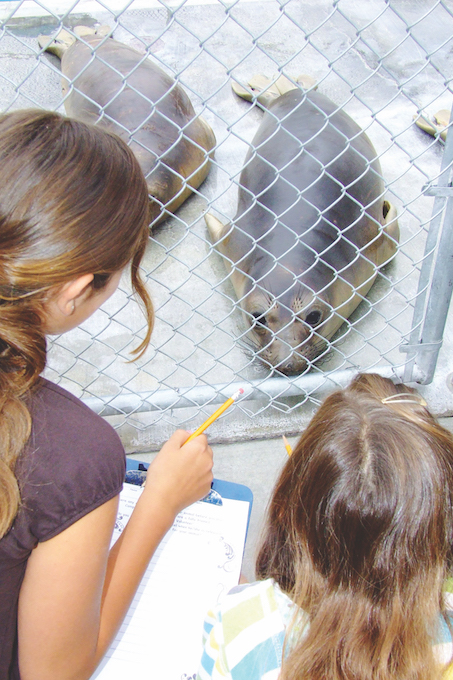
According to Donald, children can take part in hand-on activities that include looking at biological samples through microscopes, dissecting marine creatures, conducting behavioral research, analyzing acoustics of sounds made by both humans and marine mammals in the ocean, attending beach cleanups, creating tools to help clean the ocean, plus arts and crafts or games that demonstrate concepts related to conservation or biology; simulations of rescuing and rehabilitating the animals also take place.
“Because of the connection forged between the students and animals, compassion is generated for marine life that results in the motivation to take action on their behalf,” Donald says. “… Designing and launching these programs gives me a great sense of fulfillment through the knowledge that we are inspiring and raising awareness in the current and next generations about how imperative it is to make environmentally friendly practices part of our daily lives. Every program we offer imparts this message.”
After-School Action
For Sean Zulueta, nursing was his dream, but after taking a college course in animal diversity and ecology, he switched his major to biology. “My university experience allowed me to swim with whale sharks, refract high-powered lasers, synthesize organic chemicals [and] cut open geodes,” he reveals.
After working in outdoor education everywhere from the high desert of the Mojave National Preserve and the redwood forests of the Santa Cruz Mountains to the tide pools of Laguna Beach (through Laguna Ocean Foundation), Zulueta took a position as education initiatives director at the Laguna Canyon branch of the Boys & Girls Club of Laguna Beach.
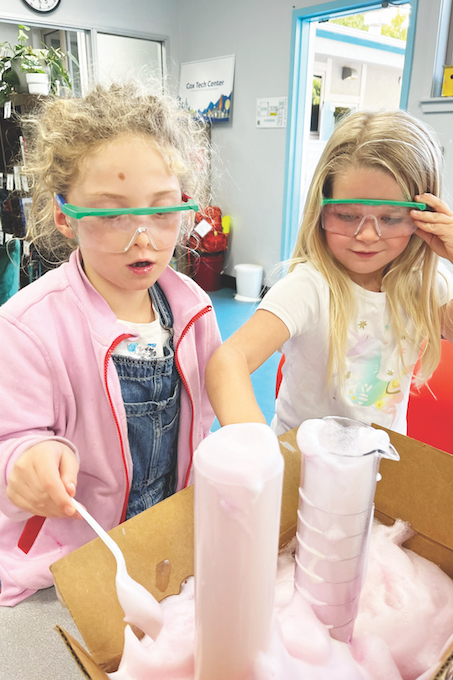
All of the Boys & Girls Club’s STEM programs are currently held in-person, on a rotating basis. Options include Space Academy, where children engineer space-related vehicles as well as out-of-this-world treats; Summer Brain Gain, with a habitat theme that ensures kids are learning about environments ranging from the deep ocean to the dry desert; and Kitchen Kraze, which offers hands-on cooking experience. Additionally, a garden club teaches lessons about botany.
Other programs, like Coding Class or Money Matters, require multiple sessions due to the complex nature of their topics. The coding sessions, led by high school volunteers, show youths how to program a small robot by building a line of code that allows the machine to move before having them navigate an obstacle course with their robot. Money Matters, on the other hand, deals with finances, spending habits, budgeting and the value of money.
“A skill that isn’t quantifiable is how resilient a person can be—[and] the field of STEM fosters curiosity and innovation,” Zulueta says. “There are going to be times when something fails. It is the resilience of the person to learn from it and keep going [that creates success].”
For Zulueta, the job’s appeal is being able to oversee a wide variety of programming. “The most enjoyable part of running these programs is watching the members help each other,” he notes. “Some activities take a lot of cooperation because the tasks can be challenging.”
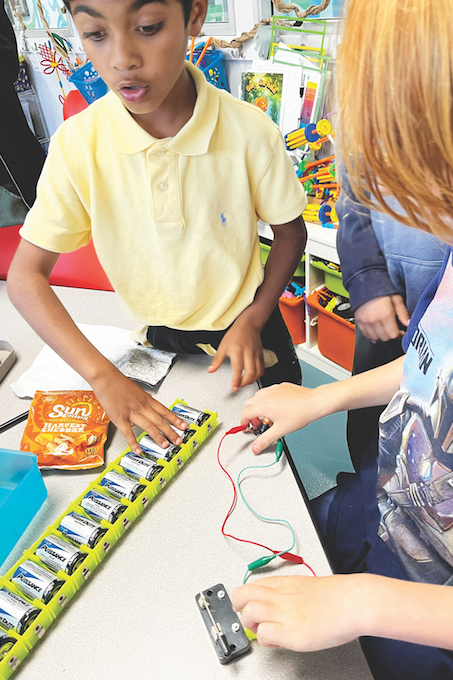
Zulueta also loves showcasing different subjects, noting that his biology degree has required him to know bits and pieces of statistics, physics, chemistry, writing and communication, graphic design and law.
“A goal I’ve been pursuing since graduating from university is to influence more kids to explore a STEM-related field of study or job,” he adds. “… People find it hard to conceptualize something that is theoretical. … One thing I continue to work on as an educator is being able to break down and simplify complex STEM subjects. I hope to impact these students by introducing and breaking down a complicated topic to where they want to learn more about it.”
Oceanic Observations
Crystal Cove State Park, a picturesque beach on the edge of town, is home to stunning scenes, historic beach cottages and scientific opportunities galore. So it’s no surprise that Crystal Cove Conservancy, a nonprofit partner of the park, provides STEM opportunities for local kids.
Mainly offered through field trips (supplemented with programming that aligns with curriculum in the classroom), visits to this beloved cove are memorable in more ways than one. “Having access to STEM education that’s based on real environmental problems that are local to our students gives them an opportunity to see how science ideas are actually being used in the real world, outside of a science classroom,” Magliano explains.
Magliano, who has been developing and running the conservancy’s education programs since graduating from UC Irvine, says students from kindergarten through high school participate in research to help protect Crystal Cove’s ecosystems. They go through the entire scientific process, from asking questions, developing models and making predictions to collecting and analyzing actual data.
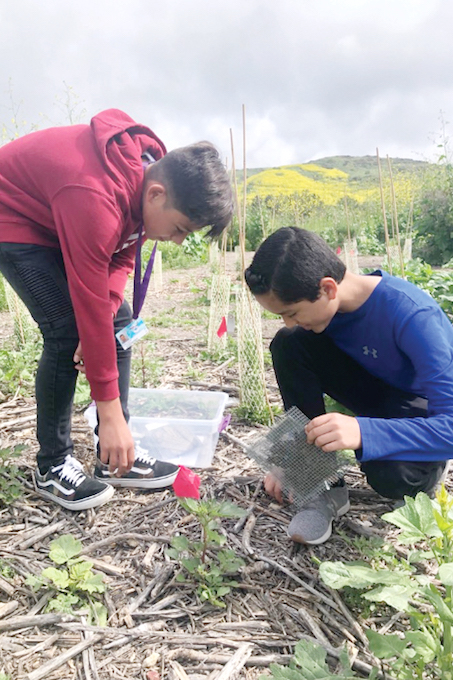
“What sets Crystal Cove Conservancy’s programs apart is the fact that students who are participating are taking part in real scientific research,” Magliano says. “… The data students collect is used by scientists to better protect our local ecosystems, and the conservation projects are able to make a tangible impact on protecting … [these] important habitats.”
Some topics they touch on include the health of the marine ecosystem, the best ways to restore endangered coastal sage scrub, the changing coastline, decomposition and the carbon cycle, and the problems that arise from trash littered on the beach. In addition to collecting samples of things like insects or plankton, little scientists will record underwater videos of fish swimming in the kelp forest, measure the amount of moisture in the soil or sort types of trash found in the sand. The programs are organized by age so that, as the children grow, they advance through the different research projects and enhance their skills.
And while these skills are pivotal for those hoping to enter science-based careers, Magliano says that they can benefit all students. “The skills gained through STEM education can prepare students to be future scientists, but even students who go on to pursue careers outside of science can benefit from scientific skills,” she notes. “Asking questions, investigating solutions to problems and communicating what they’ve learned are skills that can help prepare students for the future, as well as foster … a local community … that is dedicated to protecting the local ecosystem.”
